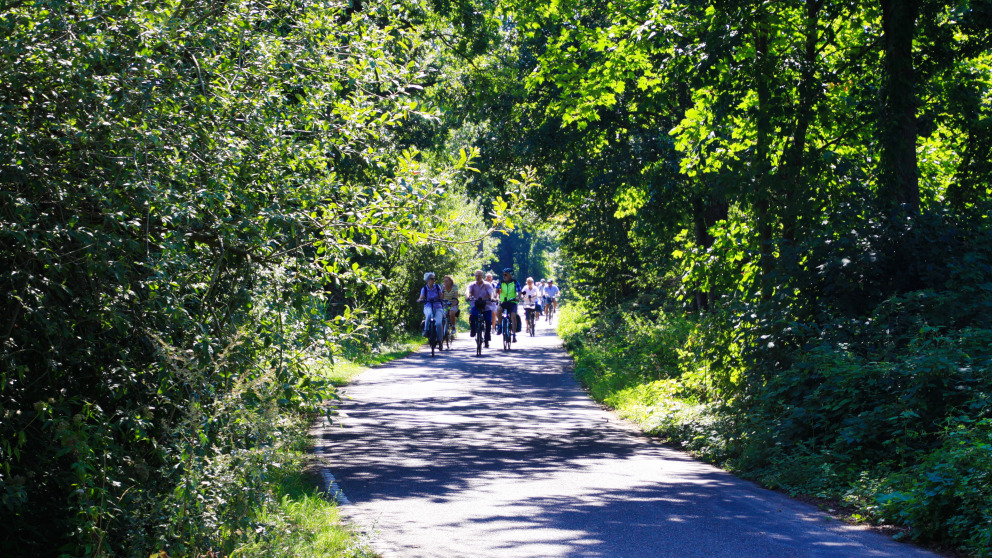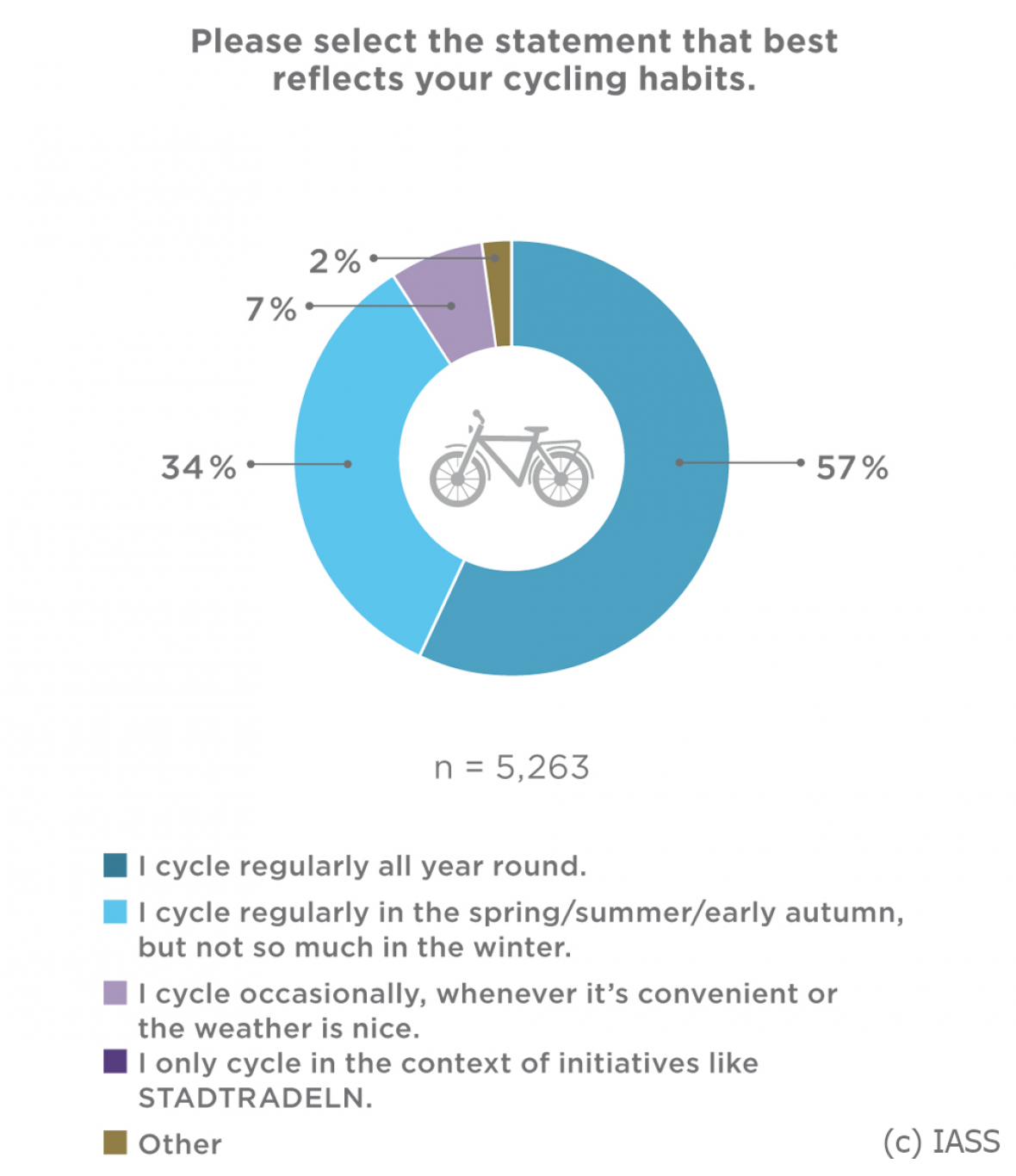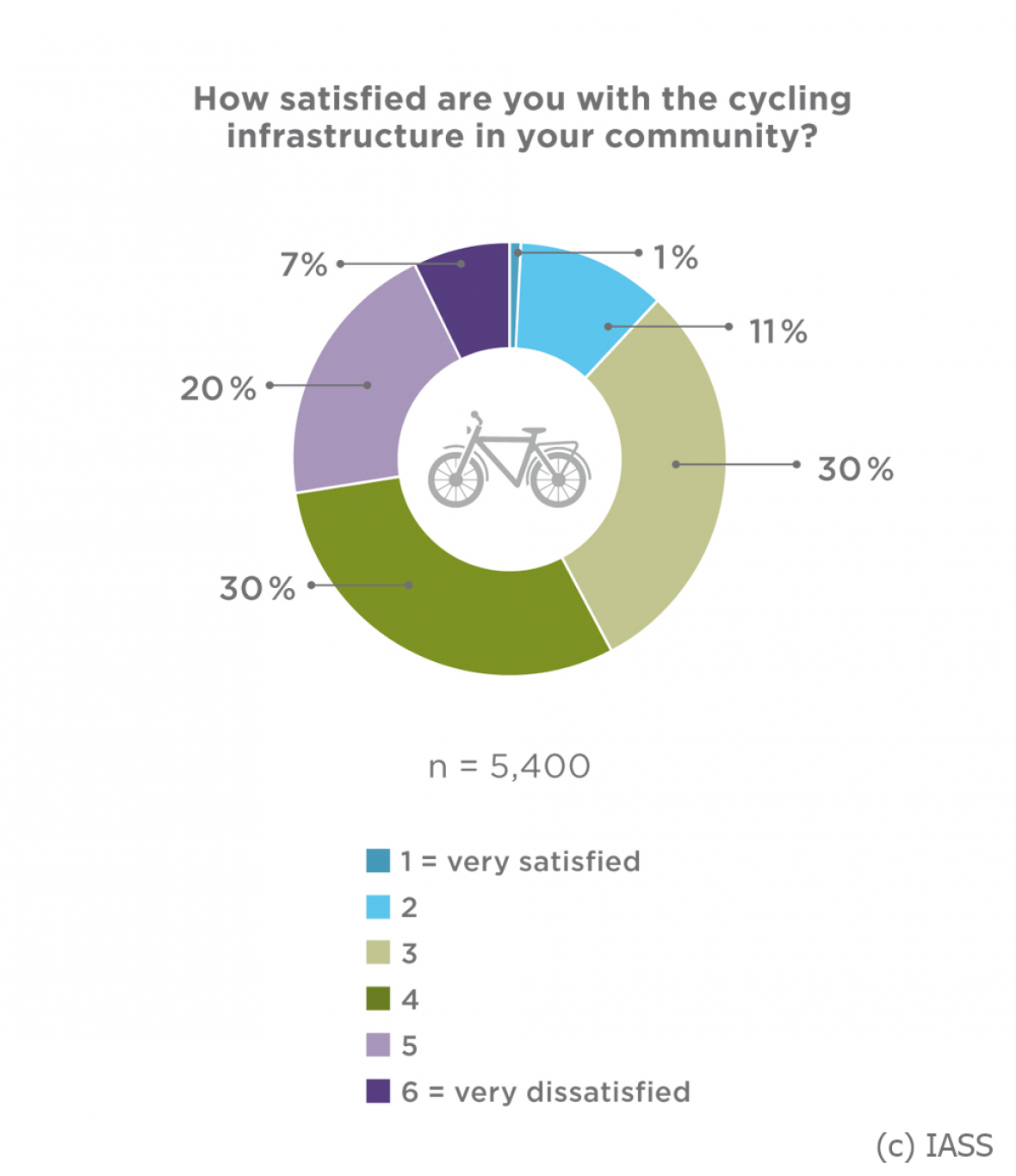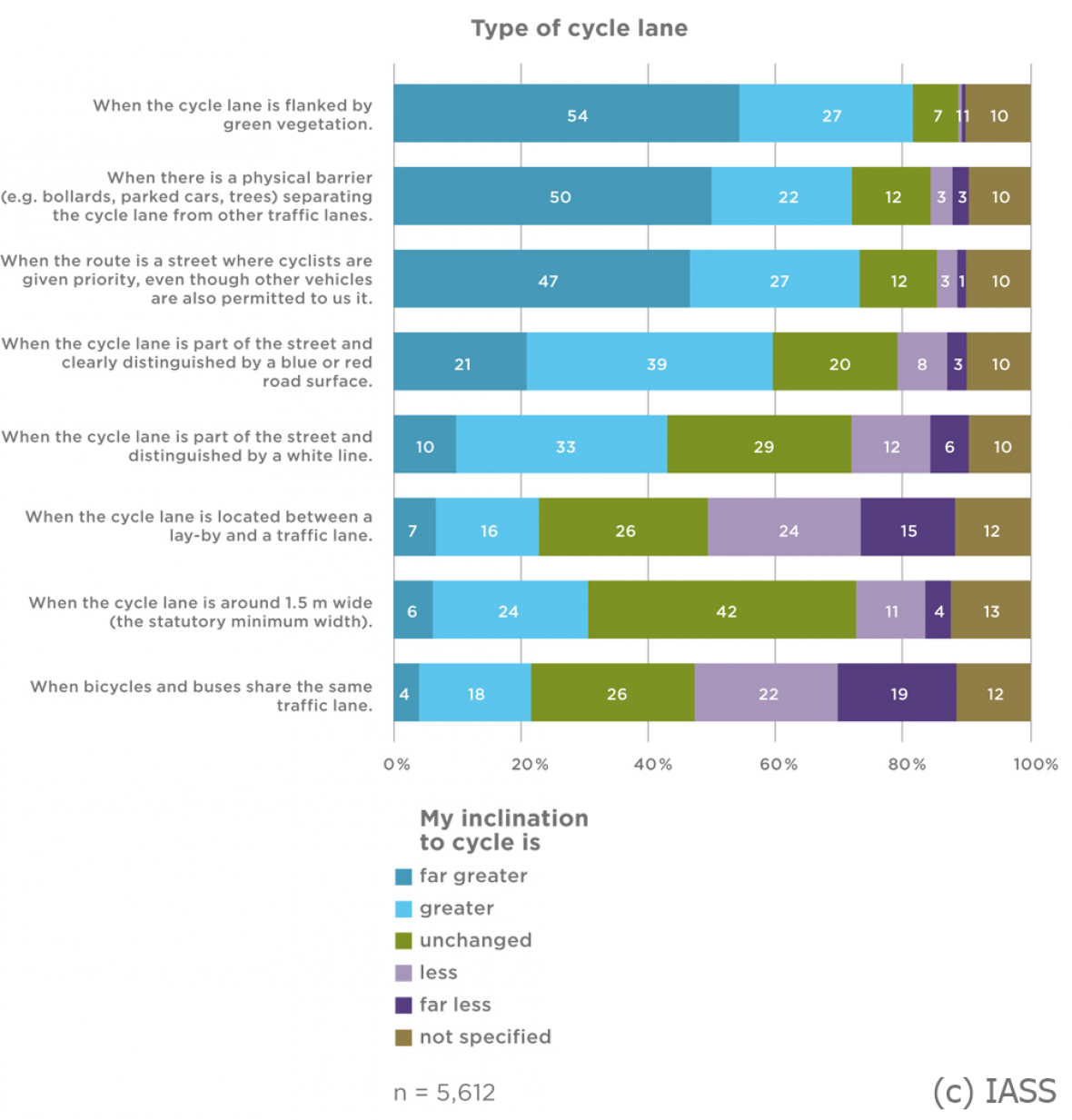STADTRADELN: Making Sustainable Mobility More Visible
13.09.2019
As well as helping to make sustainable mobility more visible, the STADTRADELN campaign exposes the weak links in Potsdam’s cycling infrastructure. As an online IASS survey reveals, the campaign only managed to convert a few people to cycling: nearly all of the participants were already regular bike-users.

In the period from May to October 2018, a team of researchers conducted a survey among participants in the STADTRADELN campaign across Germany. Respondents were asked for their views on the cycling infrastructure in their cities and what would motivate them to cycle more often. During the campaign the survey could be accessed via the online cycling calendar that the teams used to track the kilometers travelled. A total of 5,612 questionnaires were filled out, which corresponds to around 2 per cent of the participants. Since the respondents were self-recruited, the survey is not representative.

91 per cent of respondents cycle on a regular basis, but one third of them often switch to other modes of transport in winter. 52 per cent of respondents would like to cover even more distances by bike. However, only 12 per cent say they are satisfied or very satisfied with the cycling infrastructure in their communities.

“The respondents who are dissatisfied cite fragmentary cycle-lane networks and poor maintenance of existing cycle lanes. In general they feel that cars are given preferential treatment, for example at traffic lights,” explains IASS researcher Seán Schmitz. According to the majority of respondents, bicycle lanes that are physically separated from roads and not just distinguished by colour would make cycling a more enjoyable experience.

In addition to better cycle lanes, the respondents would also like to see more secure parking facilities for bicycles, more stringent enforcement of traffic law, for example in the case of parking offenders, and an expansion of the public transport network with more opportunities to bring bicycles on board with you.
Further information:
• Syed, S., Schmitz, S., Weiand, L., von Schneidemesser, E. (2019): Mobilität, Luftqualität und nachhaltige Städte: Sichtweisen der Öffentlichkeit. Ergebnisse aus der Begleitumfrage zur Stadtradeln-Kampagne, (IASS Report), 27 pages.
DOI: http://doi.org/10.2312/iass.2019.027
